 Newborn babies are dependent on their carers to wash them. Parents now have access to a variety of baby baths that will do the job from birth to 6 months.
Newborn babies are dependent on their carers to wash them. Parents now have access to a variety of baby baths that will do the job from birth to 6 months.
You need to be aware of keeping yourself safe; bending over or lifting a full baby bath can put significant strain on your back and for new mums in particular their ligaments are still delicate after child birth which means they are more susceptible to damage. Therefore think about where you are bathing your baby; are you leaning over a bath or have you got the baby bath on top of a table?
Until your baby develops trunk control (the ability to control their upper body) you will need to support them to keep them safe in the water. There are various inserts available to support you baby in a reclined (leaning back) position, freeing up both your hands to bathe your child.
If your baby has additional needs then they may require specialist bathing equipment which your Occupational Therapist will have recommended.
 Becoming independent in personal care is an important life skill that can give a young person a sense of pride and achievement. Even becoming independent in parts of the task can help a young person to feel engaged and confident in their developing self.
Becoming independent in personal care is an important life skill that can give a young person a sense of pride and achievement. Even becoming independent in parts of the task can help a young person to feel engaged and confident in their developing self.
Many children benefit from visual prompts of the steps of a routine such as showering. These are available from websites such as Do 2 Learn. Have the pictures in a place that the child can see them e.g. laminated and on the wall of the shower, and prompt your child to look at the next picture in the sequence rather than telling them what to do.

Downloadable bath routine sequence cards for you to print off and use.
 Hand washing is an essential skill for children of all ages.
Hand washing is an essential skill for children of all ages.
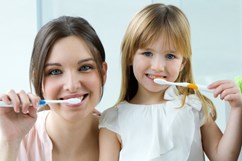
Brushing your teeth is an essential part of oral hygiene. Setting good habits from a young age is important.
NHS Scotland recommends that all children brush their teeth twice a day. Brush in the morning and last thing at night. Have set times that your child brushes their teeth. Then it will be part of their morning and evening routine, for example: bath, pyjamas, brush teeth, story and bed.
It is recommended that an adult helps a child to brush their teeth until at least the age of seven. This is when they have developed the coordination required to reach all their teeth. Encourage younger children to have a go at brushing their teeth first before you take over. Children with additional support needs may need assistance beyond the age of 7.
There are many Apps available that can support your child’s teeth brushing. A reward chart might be helpful but remember not use a sugary food treat as a reward!
Many children benefit from visual prompts to support their understanding of routines. Include a picture of teeth brushing or a toothbrush in your child’s morning and evening visual schedule.
Sometimes children don't like the feel of a toothbrush or the taste of toothpaste. It takes time to get used the taste and feeling of toothpaste and toothbrushes. Using a different type of toothbrush or toothpaste might help. Speak to your dental healthcare professional for advice.
 Child Smile is the NHS Scotland programme promoting oral health. See the Child Smile website for lots of tips and hints on promoting good oral health for your child.
Child Smile is the NHS Scotland programme promoting oral health. See the Child Smile website for lots of tips and hints on promoting good oral health for your child.
 The British Society of Paediatric Dentistry (BSPD) is the national society dedicated to improving the oral health of children from birth to 16.
The British Society of Paediatric Dentistry (BSPD) is the national society dedicated to improving the oral health of children from birth to 16.

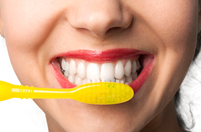 Brushing your teeth is an important part of your oral hygiene routine. Daily brushing and cleaning between your teeth is important because it removes plaque. If the plaque isn’t removed, it builds up and can cause tooth decay and gum disease. You should brush your teeth at least twice a day. Toothbrushes should be replaced every 3-4 months, or when the bristles get worn or frayed.
Brushing your teeth is an important part of your oral hygiene routine. Daily brushing and cleaning between your teeth is important because it removes plaque. If the plaque isn’t removed, it builds up and can cause tooth decay and gum disease. You should brush your teeth at least twice a day. Toothbrushes should be replaced every 3-4 months, or when the bristles get worn or frayed.
Click here for more information.
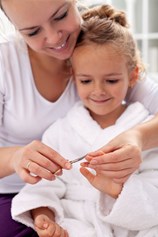 Nail Cutting
Nail CuttingSome children have difficulty tolerating having their nails cut which can make this necessary task upsetting and stressful for parent and child.
Here are some suggestions for you to try with your child:
 Try different tools for example if your child cannot tolerate nail scissors, try using nail clippers or a nail file. You may need to experiment with a few different things before finding what is most comfortable for your child. Some children take a little while to adapt to new sensations so try to use a new tool 4 or 5 times before trying the next thing. Curved nail scissors, baby nail clippers, nail files (cardboard or glass) are all worth trying.
Try different tools for example if your child cannot tolerate nail scissors, try using nail clippers or a nail file. You may need to experiment with a few different things before finding what is most comfortable for your child. Some children take a little while to adapt to new sensations so try to use a new tool 4 or 5 times before trying the next thing. Curved nail scissors, baby nail clippers, nail files (cardboard or glass) are all worth trying.
Ensure your tools are sharp so that they cut through the nail on the first attempt.
 Using visual supports for nail cutting can help many children. Use a picture to represent the nail cutting with a picture to represent a preferred activity such as snack or TV. Explain to your child that first he will have his nails cut, then he can have his snack.
Using visual supports for nail cutting can help many children. Use a picture to represent the nail cutting with a picture to represent a preferred activity such as snack or TV. Explain to your child that first he will have his nails cut, then he can have his snack.
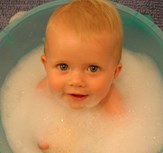 Try straight after a bath when your child’s nails are a bit softer.
Try straight after a bath when your child’s nails are a bit softer.
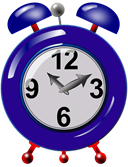 Try small bursts where you cut one or two nails at a time.
Try small bursts where you cut one or two nails at a time.
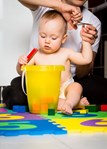 Use distraction: If your child becomes absorbed while watching a favourite programme, trim her nails while she is watching. Singing songs together, playing with a toy or listening to music may also help.
Use distraction: If your child becomes absorbed while watching a favourite programme, trim her nails while she is watching. Singing songs together, playing with a toy or listening to music may also help.
 Many families wait until their child is asleep to cut their nails.
Many families wait until their child is asleep to cut their nails.
Sometimes children are more tolerant of sensations when they are in control of them. Encourage older child to become independent in cutting or filing their own nails, even young children can be taught to use a nail file.
Try talking to your child about what it is they don’t like about nail cutting: it may be how you are holding their fingers, fears of being hurt or not liking the feeling of having short nails afterwards. Understanding your child’s concerns can help you negotiate a solution.
 Everything from brushing and washing to cutting and styling.
Everything from brushing and washing to cutting and styling.

Downloadable Hair Cutting sequence cards for you to print off and use.
 Starting her period can be a challenging time for any girl. Click on the link on the right to access further information about supporting your daughter through this challenging stage.
Starting her period can be a challenging time for any girl. Click on the link on the right to access further information about supporting your daughter through this challenging stage.
Growing and learning is a series of books that support the parents and carers of children and young people with learning disabilities. The book on sexual health also covers managing the onset of puberty.

Downloadable sequence cards for adolescents girls on managing periods for you to print off and use.